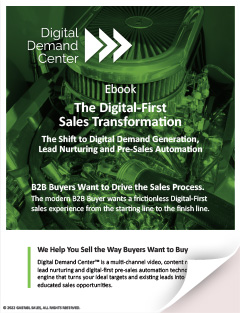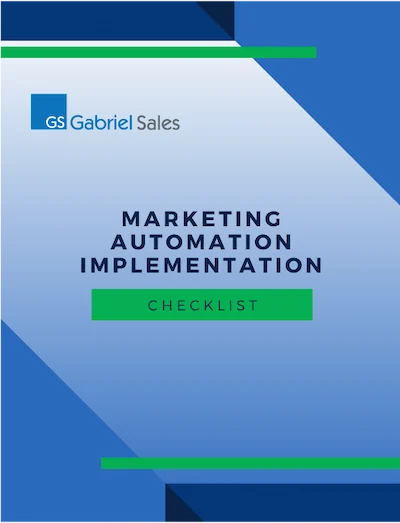
Run an Account Based Marketing Campaign Successfully
Account-based Marketing (ABM) can be a very effective way to reach your target accounts and generate leads. But it is not an appropriate solution for selling to all possible customers. Typically, you will need information from your existing sales and marketing programs to determine which existing customers are of the highest value, and which potential customers are worth the intensive investment of resources that a successful ABM program requires.
ABM works best when you can target a higher-value segment of your market. High volume, low value sales aren’t ideal for an ABM campaign. At the simplest level, in an ABM campaign, the pre-qualification you do for each potential new customer leads to an increase in profitability, because your customers have been pre-vetted as qualified. Similarly, because you have targeted an audience with a higher budget, a successful campaign means sales with a larger annual contract value (ACV). Since the cost of doing business remains roughly the same, your profitability increases by serving these potentially higher-value clients.
Those higher-value clients are found by writing and refining an ideal customer profile (ICP) that moves over the course of your work from identifying a theoretical ideal customer to identifying real businesses that could potentially benefit from investing in your product or service.
Those named-account targets can be found by examining data you should already have on hand in your customer relationship management solution (CRM). You’ll want to examine the metrics of each of your existing customers, and then do the same for your theoretical ideal customers. With your existing customers, the focus is on trying to identify which qualities of a customer make them more valuable. Are you selling to customers only of a certain size, a certain number of employees, or with a certain annual revenue? Are your deals concentrated in specific geographic areas? Are they triggered by events, such as a change in senior leadership, a change in industry trends, current events, or even changes in the company’s financial standing, such as a missed earnings target, a new stock offering, or a recent bankruptcy?
Once you have a deeper understanding of your customer, you’ll use that information to add to your portrait of an ideal customer. Using your newly developed ICP, you’ll have targeted sales prospects for your ABM campaign.
Running a successful account based marketing campaign requires a strategic approach and effective execution. ABM is a collaborative effort between marketing and sales. You need to involve sales early in the process so that they can provide input on the target accounts and help to close deals. The key to ABM is personalization. You need to create messages that are tailored to the specific needs and interests of your target accounts. You shouldn’t rely on just one channel to reach your target accounts. You need to use a variety of channels, such as email, social media, and direct mail. And because your ABM campaign is literally born out of data, it’s imperative to track the results of your ABM campaign so that you can make necessary adjustments to both your marketing campaigns and your ideal customer profile.
Here’s a step-by-step guide to help you run an Account Based Marketing campaign
- Define your ICP: Begin by clearly defining your target accounts based on your Ideal Customer Profile. Identify the characteristics and criteria that make a company a good fit for your products or services.
- Identify target accounts: Based on your ICP, create a list of high-value target accounts that align with your business objectives and have the potential for significant impact.
- Research and gather insights: Conduct thorough research on each target account to understand their specific needs, challenges, goals, and key decision-makers. Gather insights from both internal sources (e.g., sales teams, customer support) and external data providers.
- Develop personalized content: Create tailored and relevant content that addresses the pain points and objectives of each target account. This could include customized blog posts, case studies, whitepapers, videos, or other formats.
- Choose appropriate marketing channels: Select channels that are most effective for reaching your target accounts. This may include email marketing, social media, direct mail, webinars, events, and one-on-one interactions like phone calls or in-person meetings. Different customers require different approaches based on their demographics.
- Coordinate sales and marketing efforts: Alignment between your sales and marketing teams is crucial for ABM success. Collaborate with your sales team to develop account-specific strategies and messaging.
- Personalize outreach and engagement: Craft personalized messages for each key decision-maker within the target account. Address their specific needs and pain points to demonstrate that you understand their challenges.
- Implement automation and technology: Use marketing automation tools to scale your ABM efforts efficiently. Automation can help with content distribution, lead tracking, and personalized follow-ups.
- Measure, Analyze, Optimize and Iterate: Track key performance indicators (KPIs) specific to your ABM campaign, such as engagement rates, conversion rates, pipeline progression, and revenue generated from target accounts. Analyze the data to assess the effectiveness of your campaign and make data-driven adjustments. Continuously review the performance of your ABM campaign and optimize your strategies based on the insights gained. ABM is an iterative process, and ongoing improvements will lead to more effective targeting and engagement.
- Focus on long-term relationships: ABM is not a one-time effort; it’s about building lasting relationships with key accounts. Nurture these relationships with personalized attention and ongoing support.
Remember that ABM is a targeted and personalized approach, so it may involve fewer accounts than traditional marketing efforts. However, the high level of engagement and personalized attention can lead to stronger connections, increased customer loyalty, and higher ROI from your most valuable customers.




